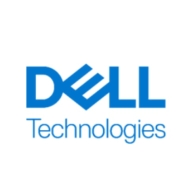

Find out what your peers are saying about Dell Technologies, Hewlett Packard Enterprise, Oracle and others in Converged Infrastructure.


FlexPod XCS is the secure platform your applications need from edge to cloud. Easily manage your suite of cloud-native, edge, and enterprise apps. Integrate advanced cloud services without compromising performance, security, reliability, or scale.
VxRail is a hyper-converged appliance based on VMware virtual SAN Software and is jointly engineered and built with VMware, for VMware, to enhance Vmware. VxRail software-defined architecture simplifies compute, storage, virtualization, and management. It will safeguard performance, reliability, and flexibility across your organization with a broad range of workloads and applications from business-critical to next-gen. With VxRail, you are covered.
VxRail is a single turn-key appliance that is a validated, fully integrated, pre-configured, pre-tested solution and offers non-disruptive scaling. Every node includes compute storage and IO. All-flash configurations can contain between 12-28 cores per node. The storage capacity options run from 7.6 TB to 19TB with either 256 GB or 512GB of memory. Hybrid appliances may have 6-20 cores per node, 3.6 TB to 10 TB of storage capacity, and 24GB to 256 GB of memory.
VxRail offers high availability fail-over, an active/active stretch cluster, and VSan Kernal integration. VxRail is a power-edged server with APIs built on automation. There are over 15 million different combinations of hardware available with VxRail. VxRail provides a simple, cost-effective solution that solves a large range of use cases. Additionally, you also get a mixed workloads automated system that is backed with fully automated system updates, and complete end-to-end lifecycle management all in a single two-rack appliance.
VxRail is a value-added suitable solution for distributed small to mid-sized enterprises, remote offices, private clouds, and virtual desktop infrastructure (VDI). You choose the deployment option that best suits your organizational needs, from appliance to integrated rack offerings, with or without networking, and it will be delivered to you, ready to deploy out-of-box.
If you know VMware, you know VxRail.
VxRail Features and Benefits
Reviews from Real Users
VxRail is an all-in-one solution: "You don't have to worry too much about the hardware and you don't have to work on integrating a storage device. We instead have this as an all-in-one solution and everything is available as a box."
VxRail is remarkable: “The cover points feature in VxRail is remarkable. It's unique. It has an intervention failover system as well as an automatic failover system, reaching clusters existing in VxRail…”
We monitor all Converged Infrastructure reviews to prevent fraudulent reviews and keep review quality high. We do not post reviews by company employees or direct competitors. We validate each review for authenticity via cross-reference with LinkedIn, and personal follow-up with the reviewer when necessary.